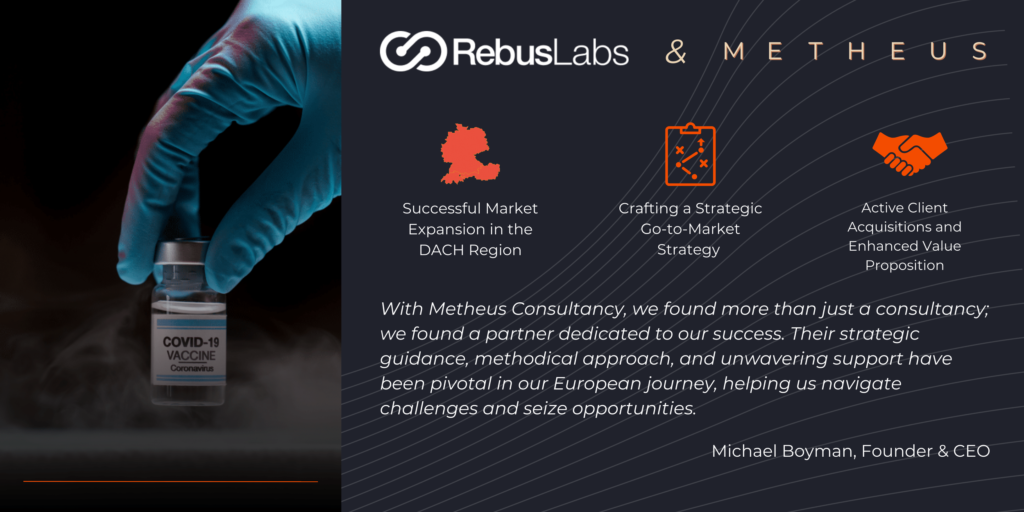What is Benchmarking?
Benchmarking is a strategic management approach where an organization’s planning and strategic development efforts are compared with those of peer companies considered leaders or best-in-class within a particular industry or sector. The main purpose of benchmarking is to identify business development opportunities and to improve the organization’s own strategic planning and implementation by adopting the most efficient practices from these leading organizations.
Key elements of benchmarking include:
-
Identification of Best Practices: Benchmarking involves identifying and assimilating the specific processes, strategies, and practices of leading organizations that enable them to achieve the best results. This process requires comprehensive research and detailed analysis.
-
Comparison and Analysis: Once best practices are identified, organizations compare their own strategic processes and performance with those of the companies they are benchmarking against. This includes detailed analyses of various aspects such as market position, financial performance, operational efficiency, and customer satisfaction.
-
Gap Analysis: Benchmarking reveals the gaps between the organization’s current state and the targeted state. This helps understand where improvements are needed.
-
Goal Setting: Based on the gap analysis, organizations set improvement goals and objectives. These goals should align with the best practices identified during the benchmarking process.
-
Implementation: After goals are set, organizations make changes to improve their strategic processes and practices. This includes changing business strategies, operations, and other areas.
-
Monitoring and Evaluation: Continuous monitoring and evaluation are important to measure progress and determine whether the implemented changes are having the desired effect. This involves continuous performance measurement against established benchmarking criteria.
-
Improvement: Benchmarking is a continuous process. Organizations must continually update their strategies and practices to stay competitive in a dynamic business environment and achieve excellence in various aspects of business operations.
Benchmarking is a valuable tool that helps organizations adapt and evolve in response to changing market conditions, customer preferences, and industry trends. It is crucial for staying competitive and achieving excellence in various aspects of business operations.
The Importance of Benchmarking in Market Expansion Processes
The importance of benchmarking in market expansion processes stands out as a tool that helps businesses systematically and data-drivenly evaluate their performance, identify the most efficient practices, and make informed decisions before entering new markets. Here are various reasons emphasizing the importance of benchmarking in market expansion processes:
-
Risk Reduction: Market expansion processes involve significant risks and uncertainties. Benchmarking helps evaluate potential risks by analyzing the experiences of other companies that have expanded into similar markets. This information allows companies to develop risk mitigation strategies and make more informed decisions.
-
Market Research and Insights: Benchmarking provides an excellent source of market research and insights. By comparing market trends, customer preferences, and competitive environments in different regions, companies can better understand their target markets and make data-driven decisions about expansion.
-
Setting Realistic Goals: Benchmarking is used to set concrete benchmarks and Objectives and Key Results (OKRs) for market expansion efforts. By comparing the performance metrics of successful companies, businesses can establish attainable goals and expectations for their expansion efforts.
-
Financial Efficiency: Benchmarking reveals cost-saving opportunities and process efficiencies that can be leveraged during the expansion process. This is critical for ensuring that expansion is cost-effective and provides a competitive advantage.
-
Strategic Decision Making: As a strategic management tool, benchmarking guides the decision-making process regarding expansion. Companies can make informed choices about market entry strategies, product/service positioning, pricing, and resource allocation using benchmarking data.
-
Learning from Mistakes: Companies can also learn from the mistakes and challenges faced by competitors during their expansion efforts. Understanding where others have gone wrong helps avoid similar pitfalls.
In conclusion, benchmarking is a critical component in market expansion processes. It helps companies make informed decisions, reduce risks, and increase their competitiveness in new markets. Learning from the experiences of others and using best practices increases the chances of a successful market expansion for businesses.
How Can I Use Benchmarking More Effectively in Market Expansion Planning?
In the constantly evolving and changing world of business, the ability to set strategic standards and develop them further is crucial for an organization’s success.
Setting Clear Objectives
The first step in strategic analysis comparison and development is to set clear and concise objectives. These should detailedly articulate what the organization aims to achieve in the short and long term, reflecting its mission and vision. These benchmarks facilitate the organization to work towards a common goal in market expansion planning.
Defining Objectives and Key Results (OKRs)
Objectives and Key Results (OKRs) are metrics and measures that provide information about an organization’s performance. To develop strategic analyses, it is necessary to carefully select OKRs that are directly related to the goals. These OKRs should be measurable and quantifiable. For example, if increasing revenue is a goal, OKRs may include measures like monthly sales growth, average transaction value, or customer acquisition cost. Choosing OKRs that present a clear picture of progress enables the organization to understand its advancement.
Quality Data Collection
High-quality data forms the foundation of effective comparisons. Collecting accurate and timely data is one of the fundamental investments for companies to enhance strategic analyses. This is typically done using data collection tools and software. Reliable data is essential for making informed decisions and setting benchmarks that reflect the organization’s current state.
Regular Monitoring and Data Analysis
Regularly monitoring OKRs is another critical step in evaluating progress. Organizations can use reporting tools and dashboards to track their performance. However, monitoring alone is not sufficient; data analysis is equally important. Data analysis helps organizations identify trends, relationships, and anomalies. This understanding lays the groundwork for making informed decisions and adjusting benchmarks when necessary.
Rational Strategy
Strategic analyses should not be static; they need to be part of an evolving structure that progresses with the organization and its environment. As an organization gains more insight and as market conditions change, being prepared to update strategies is of vital importance.
Seeking Expert Consultation and Fostering a Culture of Improvement
For organizations unsure about which benchmarks to set or how to analyze data, seeking expert consultation is important. Additionally, creating a culture of continuous improvement within the organization is very crucial. Employees should be encouraged to share improvement ideas, and regular reviews should be conducted to evaluate how benchmarks can be enhanced. At this point, Metheus, with its professional staff and extensive industry experience, will always be by your side.
What are the Types of Strategic Analysis Comparison?
In the constantly changing landscape of marketing, businesses continue to seek ways to gain a competitive edge, develop their strategies, and improve their performance. Strategic marketing emerges as a critical approach that achieves this by comparing a company’s marketing strategies with those of competitors and industry standards. This method serves not only as a diagnostic tool but also as a roadmap to identify areas of improvement and set performance targets. Now, let’s explore the different types of strategic marketing, each offering unique perspectives and opportunities for growth.
Competitive Strategy
Competitive strategy forms one of the cornerstones of marketing. It involves systematically comparing your marketing efforts directly with those of your competitors. By examining the strategies, communications, channels, and performance metrics used by competitors, businesses can discover what works and what doesn’t in their own markets. This approach not only helps to understand your position within the industry but also identifies areas where you can gain a competitive advantage.
Industry Strategy
Industry strategy broadens your marketing comparisons to include industry standards and best practices. Think of it as a compass guiding businesses to align strategies with the norms recognized in their own sectors. By evaluating industry-specific OKRs, businesses can better understand where they stand in order to remain competitive.
Internal Positioning Strategy
Internal analysis versus external strategies involves comparing your current marketing performance with past data. This perspective is used to track progress over time, identify trends, and pinpoint areas where improvements have been made or are regressing. It provides a critical roadmap for ongoing marketing efforts and aids in measuring long-term goals.
Functional Strategy
Functional strategy aims to isolate specific marketing functions within an organization. For example, a business may choose to compare its social media marketing performance against that of other companies. Isolating distinct components of marketing helps businesses to determine their strengths and weaknesses and to improve their strategies accordingly.
Customer Strategy
Customer strategy has a structure that brings the customer perspective to the forefront. Gathering feedback and assessing customer satisfaction can help measure how well your marketing aligns with customer needs and expectations. This approach encourages customer-centric marketing and plays a critical role in a customer-focused market.
Market Research
Market research leverages the richness of existing data and reports to compare your marketing efforts with market trends, consumer behaviors, and market dynamics. By aligning strategies with market realities, businesses can better adapt to the changing environment and capitalize on opportunities.
Marketing Mix
The marketing mix, often referred to as the 4Ps (Product, Price, Place, and Promotion), forms the fundamental framework of a marketing strategy. Comparing these elements with competitors helps businesses adjust their marketing mix to gain a competitive advantage in the marketplace.
Digital Marketing
In an increasingly digital world, digital marketing aims to enhance and advance online marketing efforts. This includes website performance, search engine optimization (SEO), content marketing, and social media strategies. Comparing these digital aspects with industry standards or the best-performing companies in the digital space allows for the development of online strategies to more effectively capture an online audience.
Being an expert in multiple areas is difficult, as is assimilating the actions made in B2B journeys to grow your brand or gain a larger market share. Metheus Consulting is ready to accelerate and lead your B2B customer journey to success, with expert consultants eager to develop and customize solutions to meet your business needs. Reach out to us today to move your business towards significant success!





